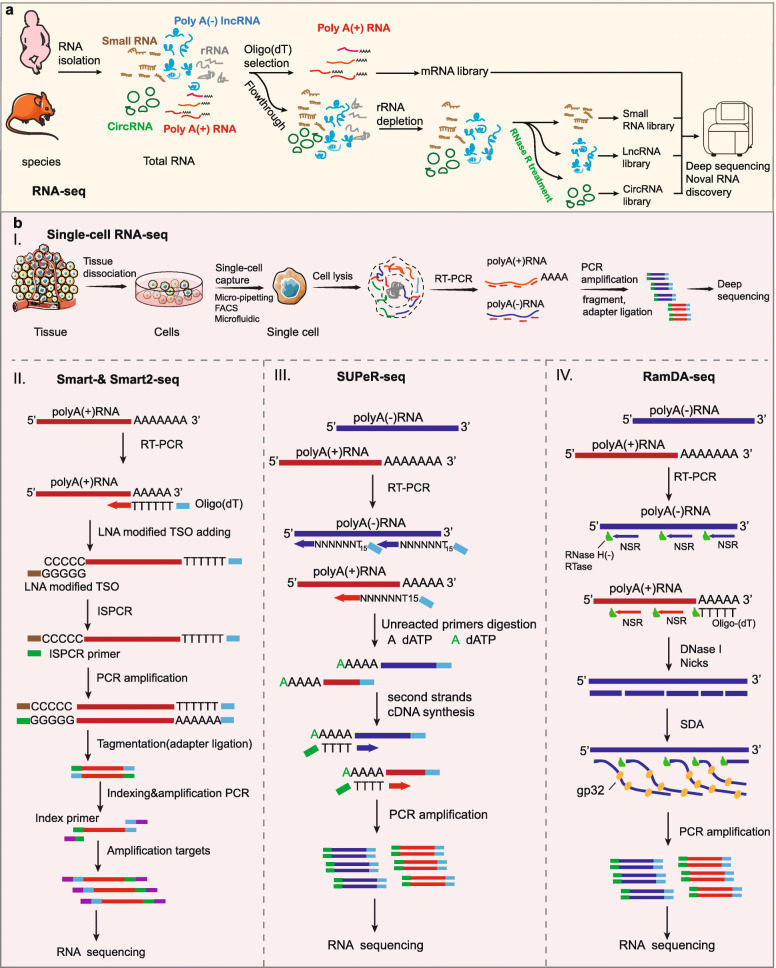Fig. 2.
Technologies for novel ncRNA discovery. a Process diagrams of RNA-seq. RNA-seq with purposeful experimental treatments can be used to detect diverse species of ncRNAs, including lncRNAs, circRNAs, and small ncRNAs. b Process diagrams of scRNA-seq. (I) The schematic of single-cell RNA-seq. Single cells are isolated and lysed to release total RNAs. RNAs are then reverse transcribed into first-strand cDNAs using designed primers followed by amplification for RNA-seq. (II–IV) The detailed schematic of innovative and novel methods such as Smart-seq (II), SUPeR-seq (III), and RamDA-seq (IV). In Smart-seq, polyadenylated RNAs are reverse transcribed into a pool of cDNAs by oligo (dT) primers followed by adding nontemplate C nucleotide tails to the 3′ ends (II); however, SUPeR-seq uses random primers with fixed anchor sequences for cDNA synthesis, followed by adding poly(A) tails to the 3′ ends (III). (IV) RamDA-seq uses both oligo (dT) and random primers for cDNA synthesis. cDNA is synthesized by the RNA-dependent DNA polymerase activity of RNase H minus reverse transcriptase (RTase). DNase I selectively nicks the cDNA of the RNA:cDNA hybrid strand. The 3′ cDNA strand is displaced by the strand displacement activity of RTase mediated by the T4 gene 32 protein (gp32), starting from the nick randomly introduced by DNase I. cDNA is amplified and protected by gp32 from DNase I. NSR: not-so-random primer

